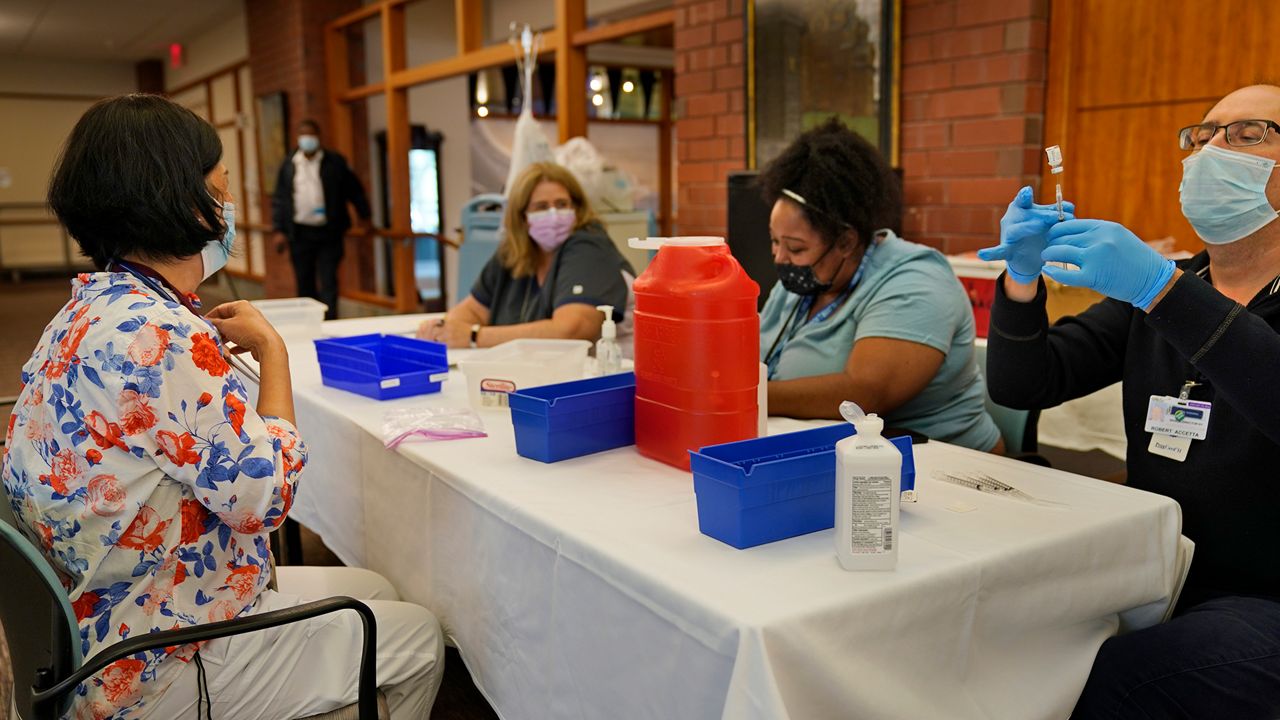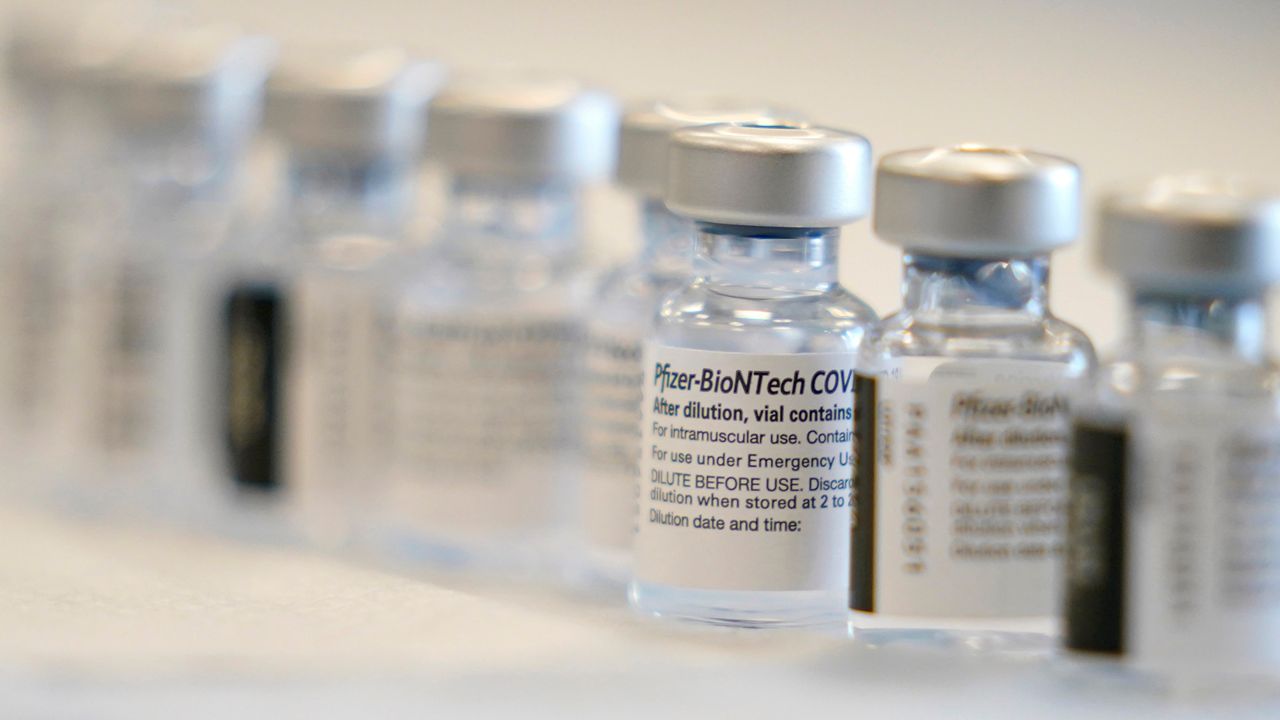COLUMBUS, Ohio — When 25-year-old Meg Kelly, a middle school teacher in Columbus, learned Friday that her occupation qualifies her for a booster shot of the Pfizer-BioNTech COVID-19 vaccine, she said she signed up for an appointment at CVS right away.
What You Need To Know
- The CDC approved booster shots for some Americans Friday
- Some who qualify registered for an appointment right away
- Boosters won't significantly reduce hospitalizations, doctor says
Kelly said without the booster, she was anxious at school, fearing that she might be more vulnerable to COVID-19 because seven months had passed since her first shots. She knows a few vaccinated teachers who work in other districts who have contracted the virus despite vaccination, she said.
On Friday, the Centers for Disease Control and Prevention approved a relatively broad booster rollout, stating that seniors 65 and older, and those 50-64 with certain medical conditions “should” get a third shot.
The agency also advised another large swath of Americans — those who live or work in high-risk settings and those 18-49 with medical conditions — that they “may get a booster shot after considering their individual risks and benefits.” The timeframe is at least six months after completing vaccination.
“There are two groups of people who should consider the booster, and there are two other groups of people who may consider the booster,” Mount Carmel Health’s Dr. Mark Herbert, an infectious disease specialist, said in an interview.
When Ohio was offering priority-vaccine access in February to school staff, on the condition that districts offered in-person learning by March, Kelly got both shots of the Pfizer vaccine.
Now that her district, Columbus City Schools, is back to five days per week in-person learning, and as COVID-19 numbers remain very high in Ohio, she said she's once again worried about getting sick.
“The COVID safety protocol at not just my school, but district wide is not being thoroughly followed, which definitely encouraged me more,” she said. “We're around so many people all day — kids and adults, and obviously most of the kids are not vaccinated.”
Columbus City Schools is the largest district in Ohio, and it also recorded the most new cases in the state -- 188 among students and staff -- in the latest weekly update on Thursday.
“The problems that we’re facing are kids whose masks slip down. That's fine — they’re kids. We just correct them, but the problem is when staff isn't correcting them and letting it happen, and then more kids are thinking, ‘Oh, well, if this teacher isn't correcting me, then why does it matter,’” Kelly said.
Mount Carmel Medical Group has started offering boosters to those authorized to receive them, but Herbert said he doesn’t expect boosters to make much of a difference in reducing the burden of COVID-19 on hospitals because so few of the patients who are being admitted with the virus are vaccinated, he said.
“If I had a choice, I would much prefer to see people going out and completing their initial vaccination series.” Herbert said. “Individuals who have already received their primary vaccine series are generally not sick enough to be in the hospital, so I really don't think that offering boosters is going to decrease the burden on hospitals in Ohio.”
The CDC’s dashboard reports there have been 4,493 documented COVID-19 deaths and 19,136 hospitalizations among fully vaccinated people. Meanwhile, more than 2,000 people are dying per day of COVID-19 in the U.S. and about 85,000 are currently hospitalized. The CDC acknowledges its data is likely an undercount due to incomplete data.
The goal with boosters is not so much to stop severe illness, but instead to prevent minor infections among those who are eligible, Herbert said.
However, he expects the earlier rollout in August of third doses for both the Pfizer and Moderna vaccines to immunocompromised people to prove somewhat consequential for reducing hospitalizations.
Many people in that small segment of the population are at high-risk for severe complications if they contract COVID-19, and they may not have generated as robust an immune response to a two-dose regimen.
Herbert said that to the extent the rollout of boosters will make an impact in reducing hospitalizations, it’s likely to be most significant among those who are 80 and older.
Kelly agrees that more people need to start vaccination in order to curtail the pandemic. In the absence of high-vaccination rates in the community or at schools, she said getting the booster was the best thing to do to protect herself.
Registering online for the shot was a breeze, and she said Monday that she’d felt just fine over the weekend after getting the shot Saturday.
“For people who are hesitant, there's just so many reasons to get vaccinated,” she said. “In school, there's such a high risk of something being brought home, or spread around. The booster is just another layer of protection.”







